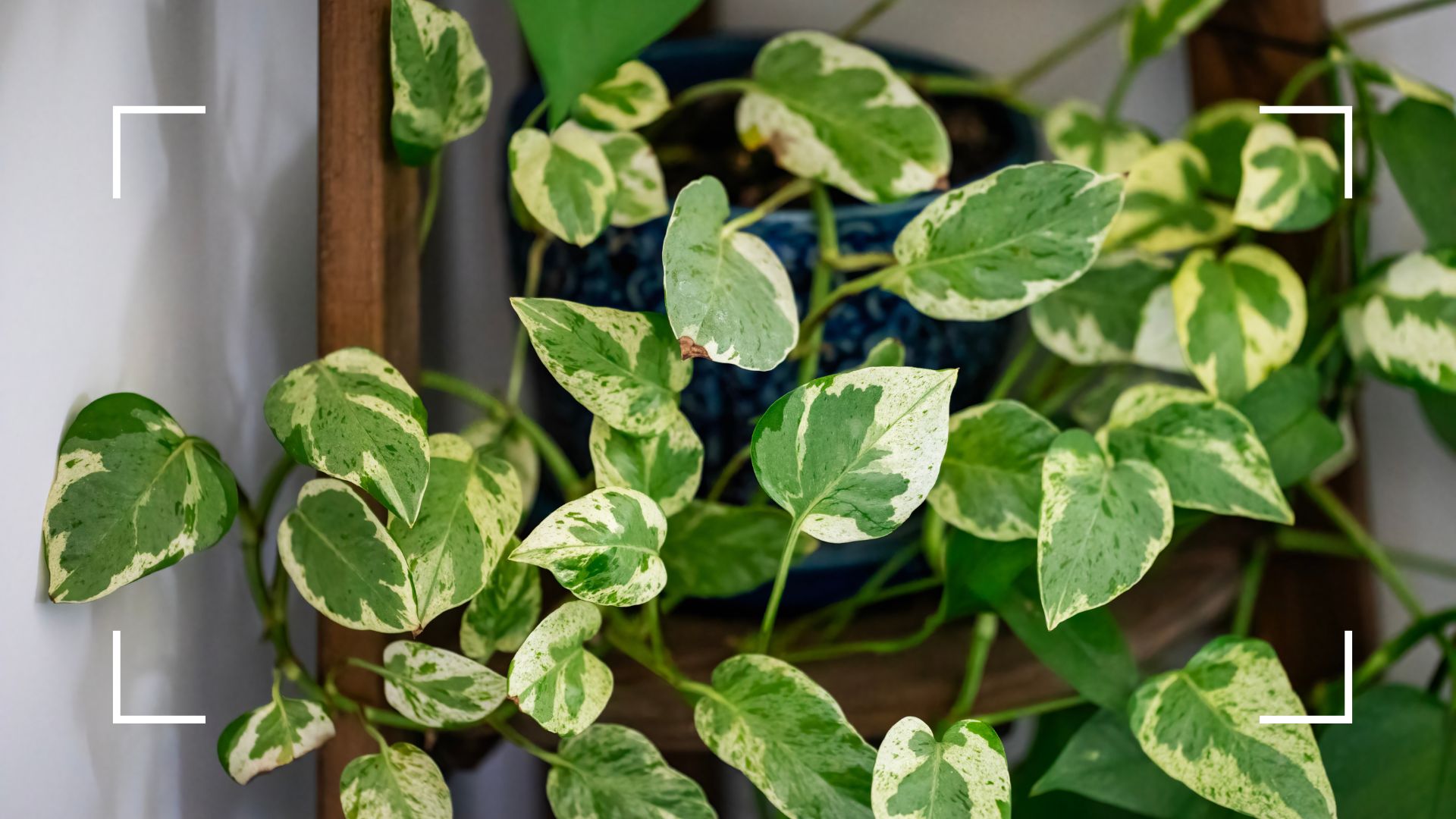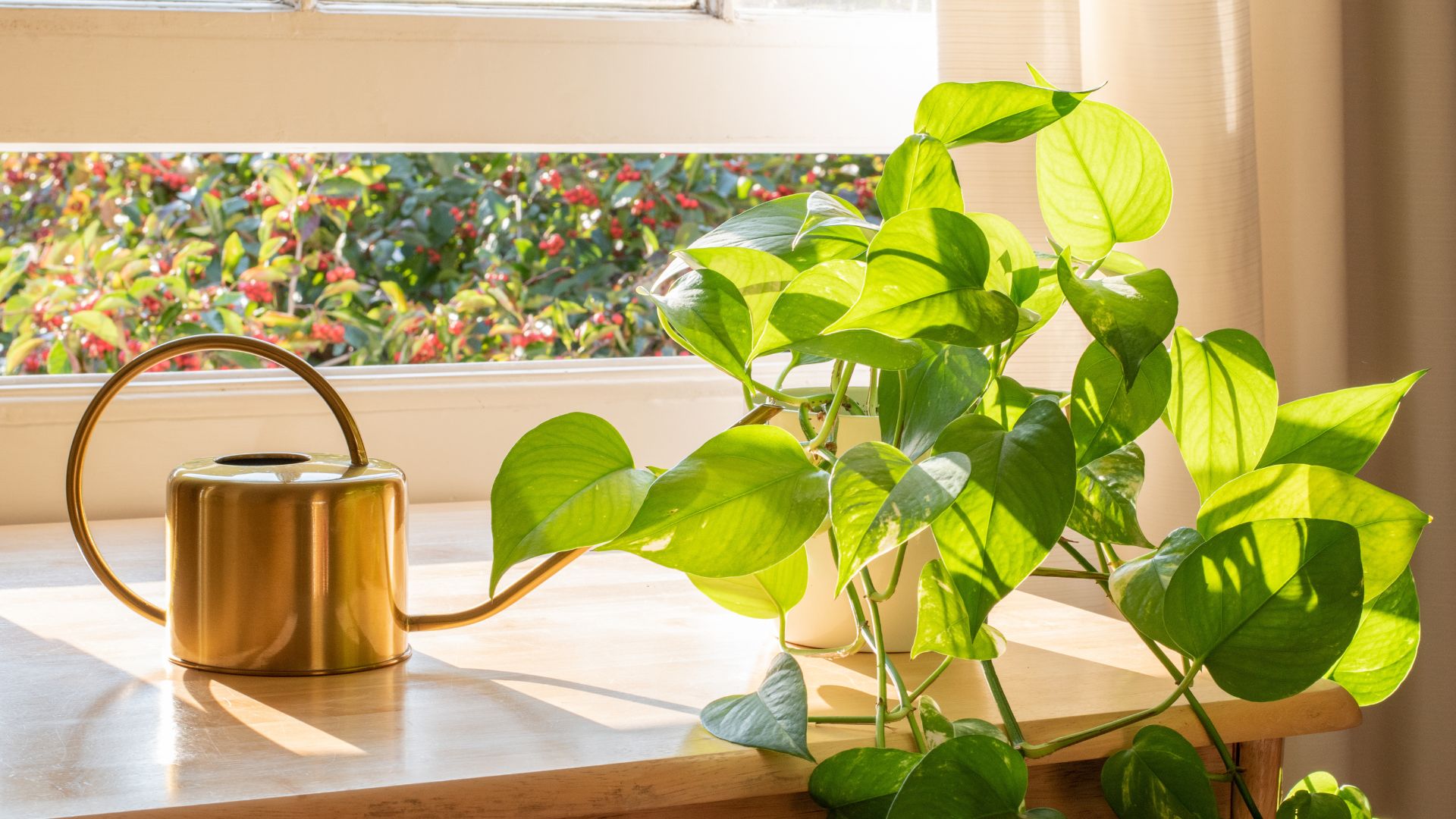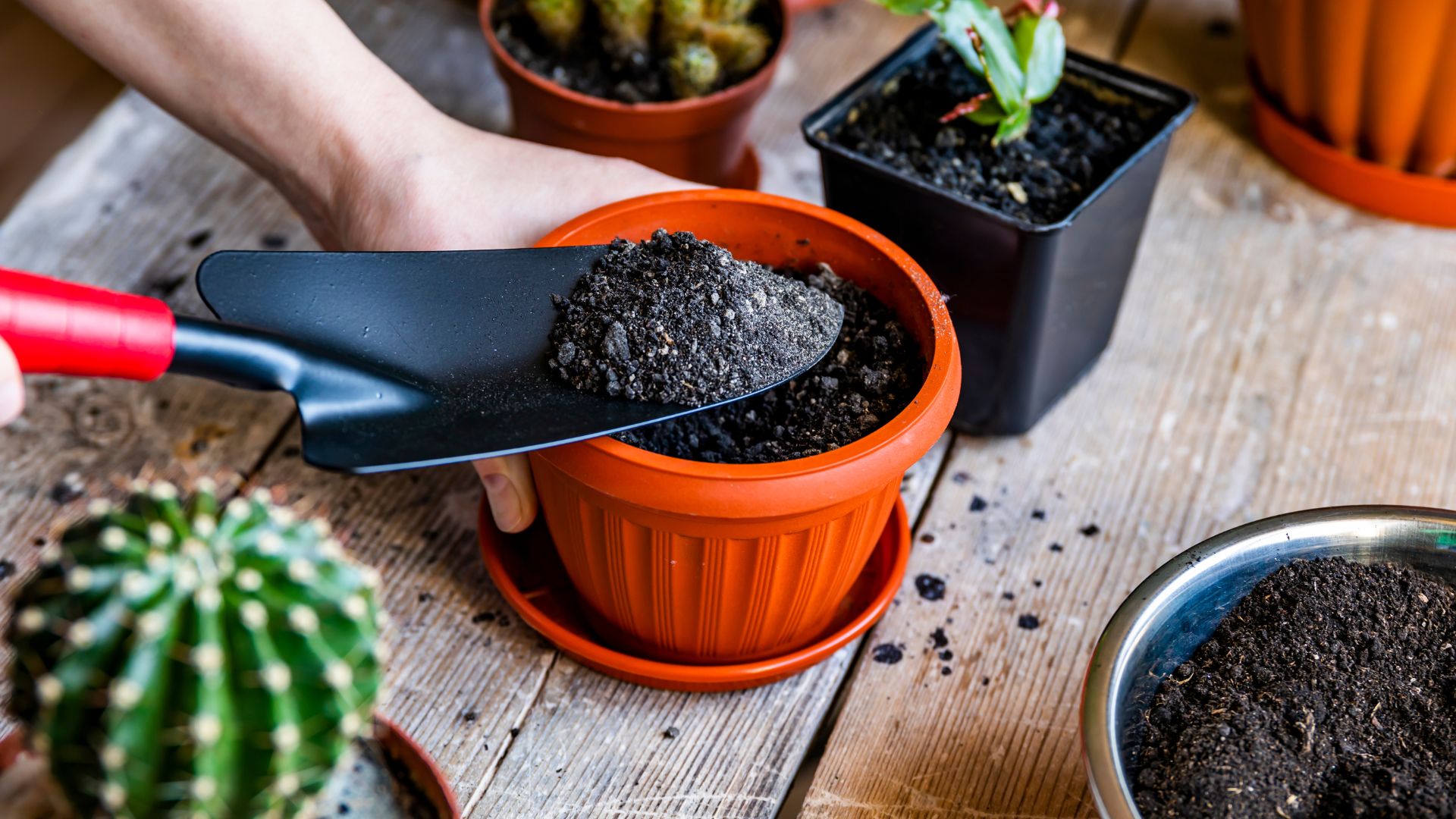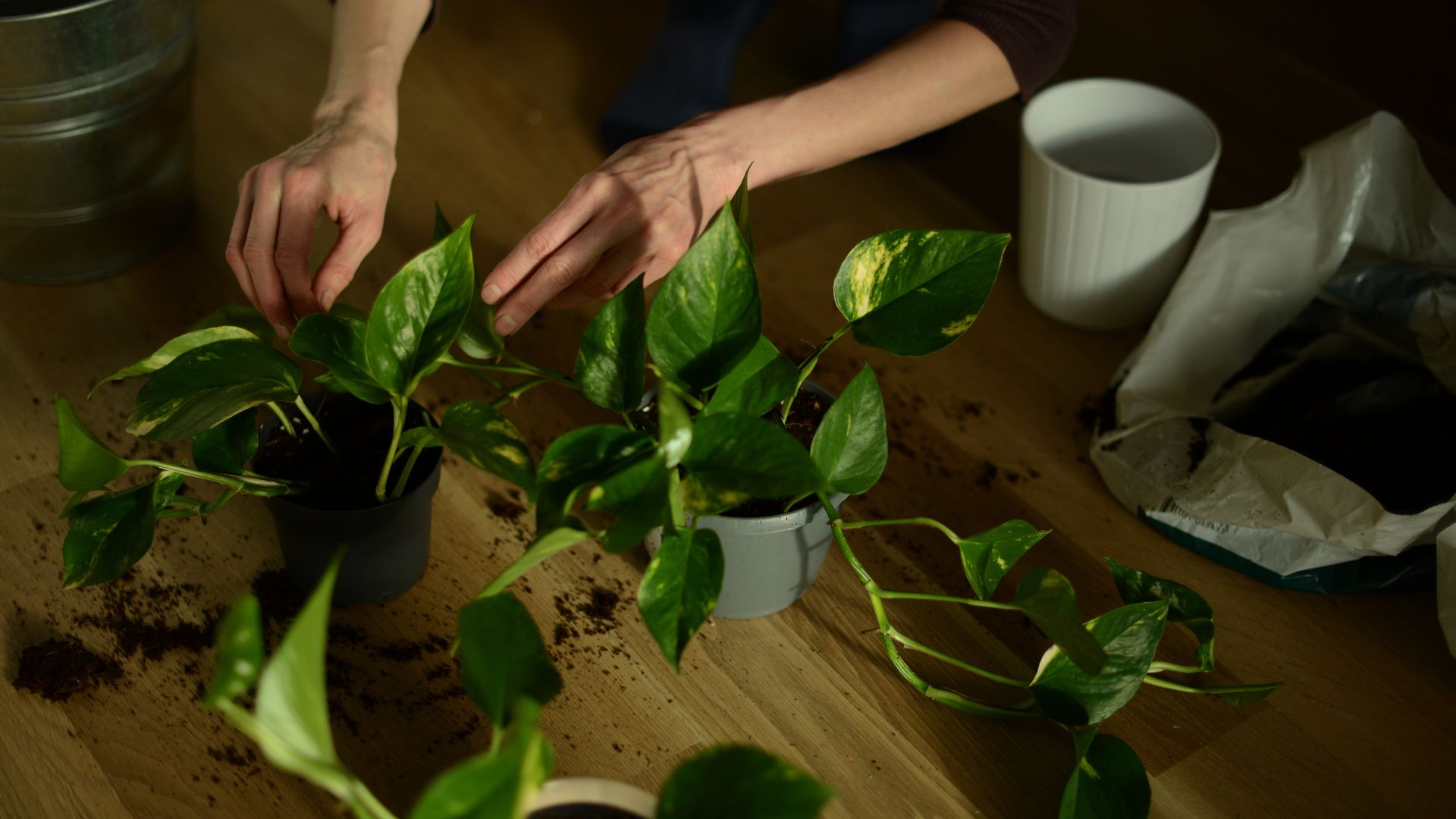
Caring for a pothos plant might seem like an effortless feat, but it's always best to avoid tragedy with houseplants and learn from the experts how to keep them thriving.
Pothos are one of the fastest-growing houseplants, making them very popular in the plant-loving community and great for beginners. Although they're one of the easiest houseplants to keep alive, it's still important to know how to care for them properly as they can surprise you with ill health at any time.
So if you want to avoid wondering why there's mould growing on your plant's soil or why its leaves are turning yellow, follow this expert step-by-step care guide.
How to care for a pothos plant: an expert guide
Caring for indoor plants can be more of a challenge than you'd expect. More often than not they tend to show signs of distress even when you thought you'd provided them with everything they need.
Knowing what your specific plant needs from watering to potting can make the whole process so much easier and help your plant grow without a hitch.
1. Find the right spot for it

One of the most common houseplant mistakes is placing your plant in the wrong spot for its light and temperature needs.
"The pothos plant should be placed somewhere it will receive bright but indirect light," explains Graham Smith MCIHort, a horticulture expert at LBS Horticulture. "It can be placed somewhere shadier, but too much shade can cause the plant to lose variegation on its leaves."
He also recommends placing the plant in a room where the temperature is between 10 and 24 degrees. This will keep the plant from cold shock or alternatively from drying out or burning from it being too warm.
Pothos plants are more than happy with the average indoor humidity, however they do benefit from the occasional mist.
2. Establish a good watering routine
Knowing how often to water your indoor plants is of course houseplant 101, but it can be a challenge when you've got an ever-growing collection in your home. So learning what each specific plant needs is key.
"You should aim to water when the top 3-5 cm of soil feels dry and avoid overwatering," says Peter Ivanov, plant and garden expert at Fantastic Gardeners. "Pothos plants prefer slightly dry soil over soggy roots - use a well-draining pot with drainage holes."
Over-watered plants can lead to root rot which is an all too common fatal mistake for houseplants.
3. Keep the leaves clean

There are some steps in plant care that you might've unknowingly been skipping, cleaning your plant's leaves might just be one of them. And yes, it can get rather frustrating when you have multiple plants with so many leaves, but there are huge benefits to doing this.
Graham advises you to regularly wipe the leaves of your pothos plant to prevent a build-up of dust. Doing this will ensure the plant can breathe properly and the sunlight is not being blocked, stopping photosynthesis.
4. Choose the right soil mix
Ensuring your plant is in the best possible soil it can be is far more important than you may think, hence why knowing the soil type in your garden is so crucial for the health of what you plant. Houseplants are no different. After all, your houseplant no matter the species will find a lot of its nutrients just from the soil alone so it's key to choosing the right type.
"Choose a potting mix that drains well and can be used for many purposes. You can prevent water buildup by using a pot with drainage holes. Plants need to be replanted every 1-2 years when their roots outgrow their pots," says Jane Dobbs, lead gardener at Allan's Gardeners.
We'd also recommend you opt for peat-free soil, this a great sustainable houseplant hack as the harvesting of peat is terrible for the environment.
5. Make sure not to overfeed

Whilst your potting soil will provide the majority of your plant's nutrients month to month, it is important you know when to help your pothos out with some extra food.
Petar says, "For the fertilising, feed it with a balanced liquid houseplant fertiliser once a month during spring and summer - reduce or skip fertilising in autumn and winter."
Over the colder months, plants tend to enter winter dormancy, for pothos, this is between October and March. During this time it will grow much slower due to lower light levels, this means that watering can be reduced and fertilising needs to be stopped.
6. Watch out for common pests
Another commonly overlooked aspect of plant care is pests and diseases, there are several kinds and they can do major damage to your beloved houseplants. It's important to know the signs of each pest and disease as well as how to get rid of them.
"Aphids, spider mites and gnats are common pests. Use insecticidal soap, and neem oil and don't overwater plants," says Jane. "Fungal infections can also often be caused by poor air circulation and high humidity can cause powdery mildew. Good drainage, well-ventilated area and regular leave checks will help you keep your plant happy."
As you can't flood your houseplants as you would with your outdoor plants, buying some neem oil is a good idea for protecting your pothos from any creepy crawlies that might be tempted.
FAQs
How to propagate a pothos plant
Whether or not you know how to take plant cuttings, the process couldn't be easier. Especially when dealing with such a low-effort, high-reward species like the pothos. The key to a successful cutting is ensuring you do each step correctly and at the right time.
"You can propagate a pothos plant by rooting stem cuttings in water. Use a pair of clean, sharp pruners to remove a healthy stem from your pothos plant. The stem you choose should have at least three leaves, and cut at an angle around an inch below the lowest leaf on the stem," explains Graham.
He adds, "Remove the lowest leaf from the stem, but the other leaves can be left in place. Then, place the stem in a jar of water, but do not allow the remaining leaves to touch the water. After a week to ten days, roots should begin to emerge from the stem."
Once the roots have reached several inches long, the cutting can be transferred to a pot with soil. Simply place the potted stem somewhere with indirect bright sun and keep its soil moist, the pothos should continue to grow from there.
How to repot a pothos plant

It's important not only to know how to repot a plant but to also know when it's the right time to repot a plant is. Repotting too early or too late can have a detrimental effect on its health and lead to a whole host of issues.
Angela Slater, Gardening expert at Hayes Garden World says, "Check to see if the plant needs repotting by removing the plant from the current pot. If the roots are circling the outside of the compost, then it needs repotting. Another sign is that the water runs straight through the pot as there is not enough compost to hold onto the moisture. Lack of water will lead to the leaves drooping or going brown around the margins."
To repot your pothos, start by filling 1/3 of a pot that's a size larger than the current one with peat-free houseplant compost. Remove as much soil from the roots of the plant as possible and place it in the new pot.
Then Angela advises, "Insert the plant and pack between the roots with fresh compost. Tap the pot a few times on the work surface to settle the compost around the roots. If you leave gaps around the roots they won’t be able to uptake water and nutrients and will eventually shrivel and die."
To finish, water and drain your plant and simply put it back in its favourite spot in your home.
How do I know if my pothos plant is happy?
Whilst there are many signs of your plant being unhappy, there are also more positive indicators that you're doing everything right.
"You will know if your plant is happy as it will regularly put out new leaves in the growing season, spring and summer. Its leaves will be glossy and healthy and it will need watering at least once a fortnight," explains Angela.
She continues, "If the plant droops or the leaf margins turn brown, then you know it has been left too dry for too long."
Another key care step, which isn't mandatory but can help your plant thrive, is to prune it. Jane says, "To prevent legginess, trim vines to encourage bushy growth. Plants need healthy leaves, so remove any yellow or damaged leaves."







